A uniform elastic plank moves due to a constant force F0 applied at one end whose area is S. The Young's modulus of the plank is Y. The strain produced in the direction of force is
Fo2SY
FoSY
2F0SY
√2F0SY
The correct Answer is:A
To find the strain produced in the direction of the force on a uniform elastic plank subjected to a constant force F0, we can follow these steps:
1. Identify the Given Data:
- Applied force, F0
- Cross-sectional area, S
- Young's modulus, Y
- Length of the plank, L
2. Define the Mass per Unit Length:
- Let the total mass of the plank be M.
- The mass per unit length of the plank is given by:
Mass per unit length=ML
3. Consider an Element of the Plank:
- Take a small element of length dx at a distance x from the starting point A.
- The mass of the small element AC can be expressed as:
Mass of AC=(ML)⋅dx
4. Apply Newton's Second Law:
- The net force acting on the small element AC is given by:
F0−T=mass of AC⋅acceleration
- The acceleration a of the plank can be expressed as:
a=F0M
- Thus, we can write:
F0−T=(ML)⋅dx⋅F0M
5. Express Tension T:
- Rearranging the equation gives:
T=F0−(F0L)⋅x
6. Calculate the Change in Length ΔL:
- The small change in length dΔL for the small element dx is given by:
dΔL=T⋅dxS⋅Y
- Substituting for T:
dΔL=(F0−F0L⋅x)⋅dxS⋅Y
7. Integrate to Find Total Change in Length ΔL:
- Integrate dΔL from 0 to L:
ΔL=∫L0F0⋅dxS⋅Y−∫L0F0⋅x⋅dxS⋅Y⋅L
- The first integral gives:
F0⋅LS⋅Y
- The second integral evaluates to:
F02⋅S⋅Y
- Therefore, the total change in length is:
ΔL=F0⋅L2⋅S⋅Y
8. Calculate Strain:
- Strain ϵ is defined as the change in length per unit original length:
ϵ=ΔLL=F02⋅S⋅Y
Final Result:
The strain produced in the direction of the force is:
ϵ=F02⋅S⋅Y
- Applied force, F0
- Cross-sectional area, S
- Young's modulus, Y
- Length of the plank, L
- Let the total mass of the plank be M.
- The mass per unit length of the plank is given by:
Mass per unit length=ML
- Take a small element of length dx at a distance x from the starting point A.
- The mass of the small element AC can be expressed as:
Mass of AC=(ML)⋅dx
- The net force acting on the small element AC is given by:
F0−T=mass of AC⋅acceleration
- The acceleration a of the plank can be expressed as:
a=F0M
- Thus, we can write:
F0−T=(ML)⋅dx⋅F0M
- Rearranging the equation gives:
T=F0−(F0L)⋅x
- The small change in length dΔL for the small element dx is given by:
dΔL=T⋅dxS⋅Y
- Substituting for T:
dΔL=(F0−F0L⋅x)⋅dxS⋅Y
- Integrate dΔL from 0 to L:
ΔL=∫L0F0⋅dxS⋅Y−∫L0F0⋅x⋅dxS⋅Y⋅L
- The first integral gives:
F0⋅LS⋅Y
- The second integral evaluates to:
F02⋅S⋅Y
- Therefore, the total change in length is:
ΔL=F0⋅L2⋅S⋅Y
- Strain ϵ is defined as the change in length per unit original length:
ϵ=ΔLL=F02⋅S⋅Y
The strain produced in the direction of the force is:
ϵ=F02⋅S⋅Y
Topper's Solved these Questions
- BOOK - DC PANDEYCHAPTER - ELASTICITYEXERCISE - Level 2 More Than One Correct8videos
ELASTICITY
- BOOK - DC PANDEYCHAPTER - ELASTICITYEXERCISE - Level 2 Comprehension Based6videos
ELASTICITY
- BOOK - DC PANDEYCHAPTER - ELASTICITYEXERCISE - Level 1 Subjective8videos
ELASTICITY
- BOOK - DC PANDEYCHAPTER - CURRENT ELECTRICITYEXERCISE - All Questions434videos
CURRENT ELECTRICITY
- BOOK - DC PANDEYCHAPTER - ELECTROSTATICSEXERCISE - Integer17videos
ELECTROSTATICS
Similar Questions
There is a uniform elastic plank moveing over a smooth horizontal plane due to a constant force F0 distributed uniformly over the front end of the plank whose area is A. If Young's modulus of the material is Y, then the compressive strain of the plank along the direction of the force is F0KAY. What is K = ?
View SolutionA car moves with a constant speed toward East. A force is applied on the car to make it stop. The direction of the applied force is toward
View Solution
Knowledge Check
- Question 1 - Select One
A uniform plank of Young's modulus Y is moved over a smooth horizontal surface by a constant horizontal force F. The area of cross section of the plank is A. The compressive strain on the plank in the direction of the force is
AF/AYB2F/AYC12(F/AY)D3F/AY - Question 2 - Select One
When a constant force is applied to a body, it moves with unifrom
AspeedBvelocityCaccelerationDmomentum - Question 3 - Select One
In the following problems, indicate the correct direction of friction force acting on the cylinder, which is pulled on a rough surface by a constant force F.
A cylinder is placed on a rough plank which in turn is placed on a smooth surface. The plank is pulled with a constant force F. The friction force can be given by which of the following diagrams.
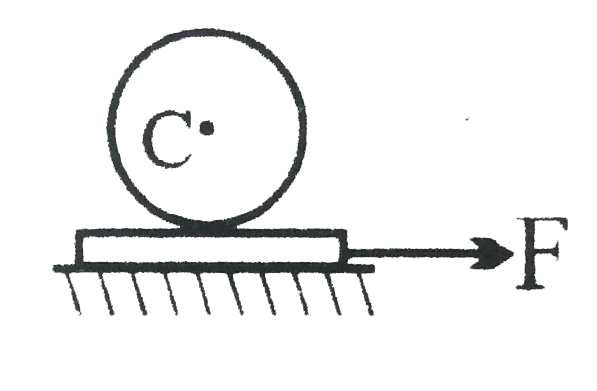 .A
.A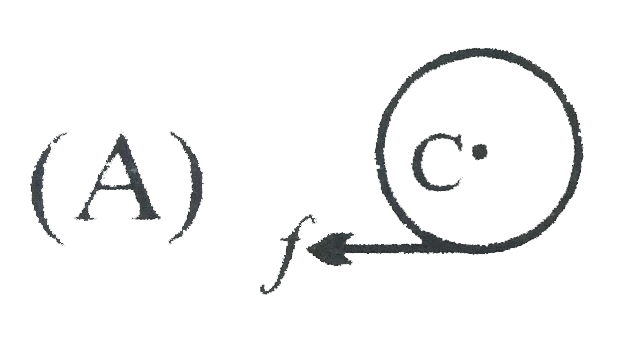 B
B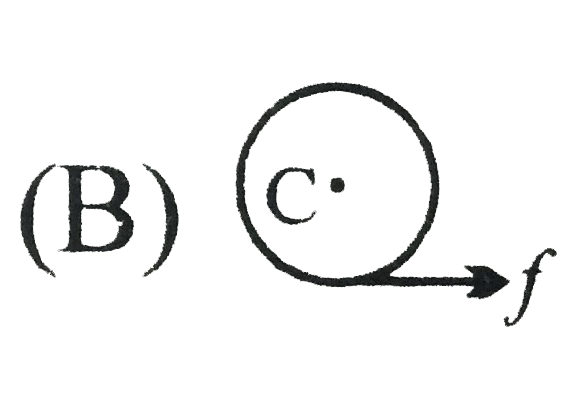 C
C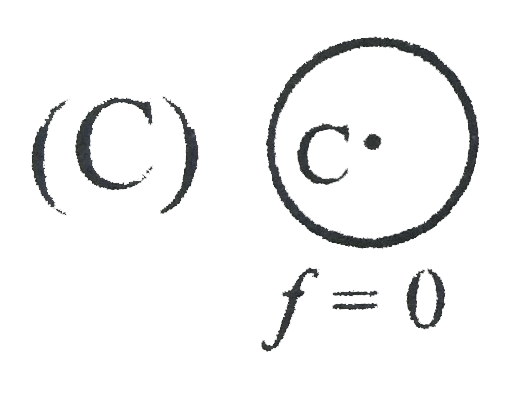 Dcannot be interpreted
Dcannot be interpreted
A sphere of mass m and radius r is placed on a rough plank of mass M. The system is placed on a smooth horizontal surface. A constant force F is applied on the plank such that the sphere rolls purely on the plank. Find the acceleration of the sphere.
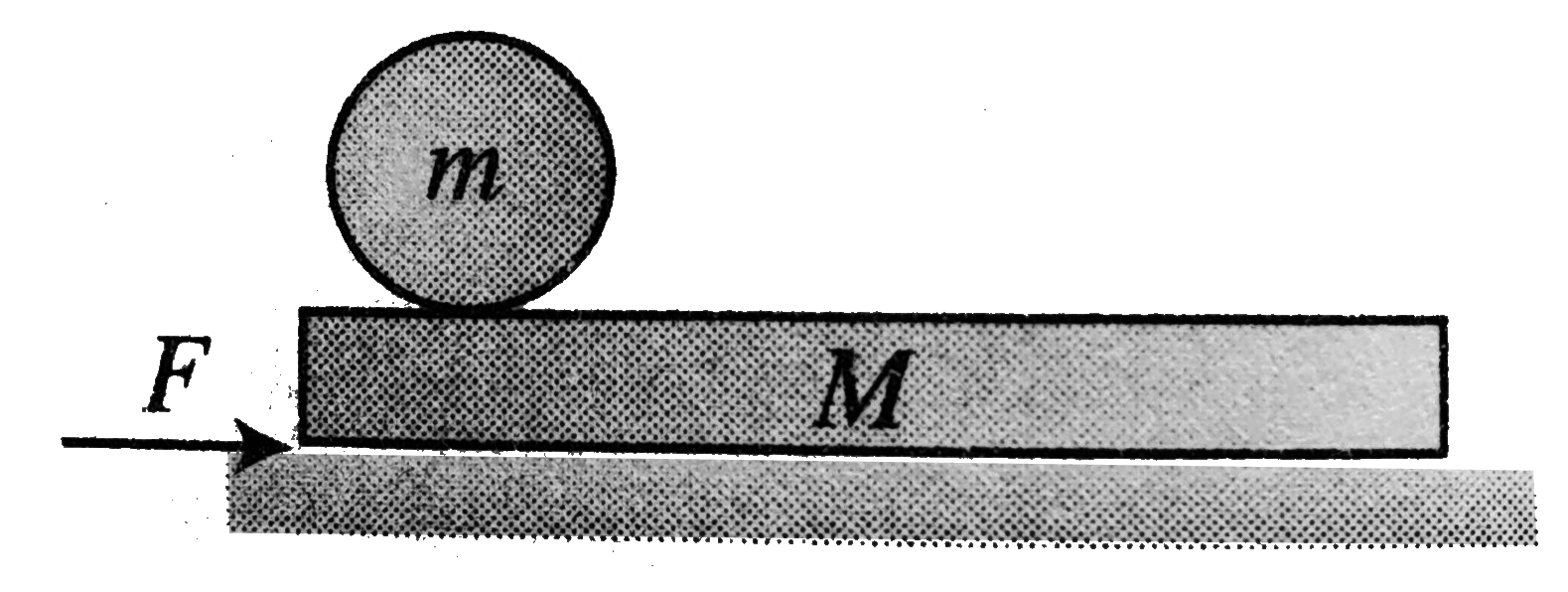 View Solution
View SolutionA plank of mass m1 with a uniform solid sphere of mass m2 placed on it rests and a force F is applied to the plank. The acceleration of the plank provided there is no sliding between the plank and the sphere is (Fm1+n7m2) then the value of n is
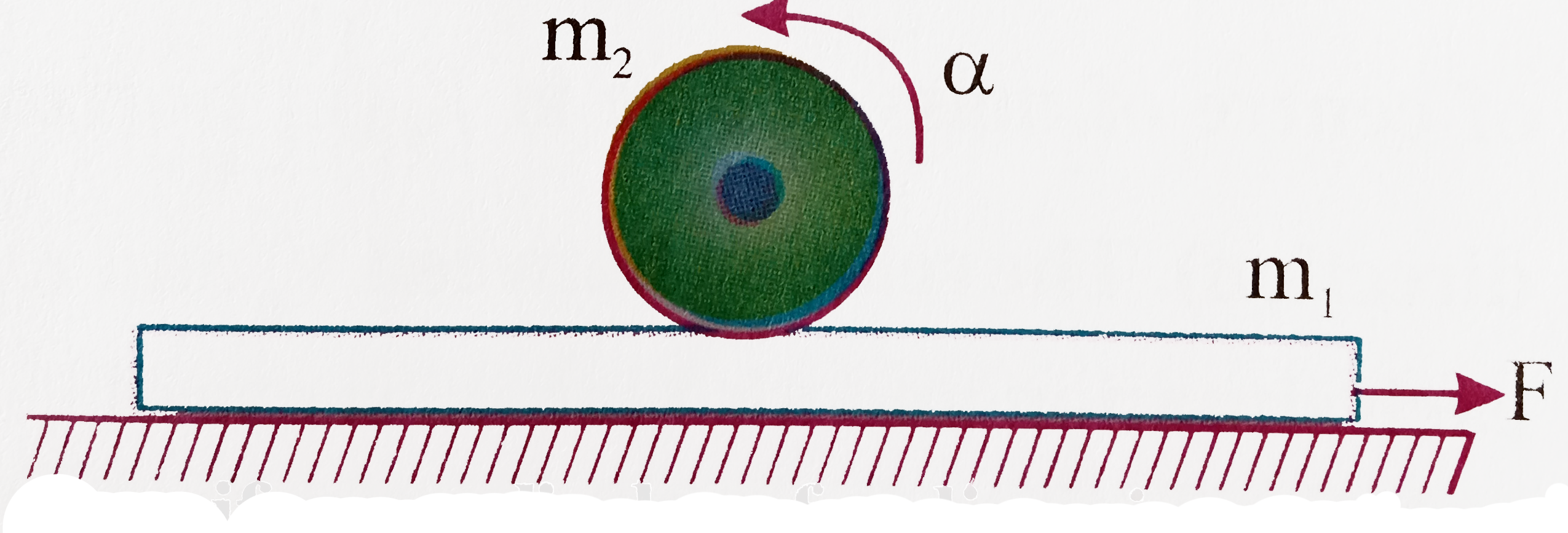 View Solution
View SolutionA plank of mass M is placed on a rough horizontal force F is applied on it A man of mass m rens on the plank find the acceleration of the man so that the plank does not move on the surface . The coefficent of friction between the plank and the surface is μ Assume that the man does not slip on the plank
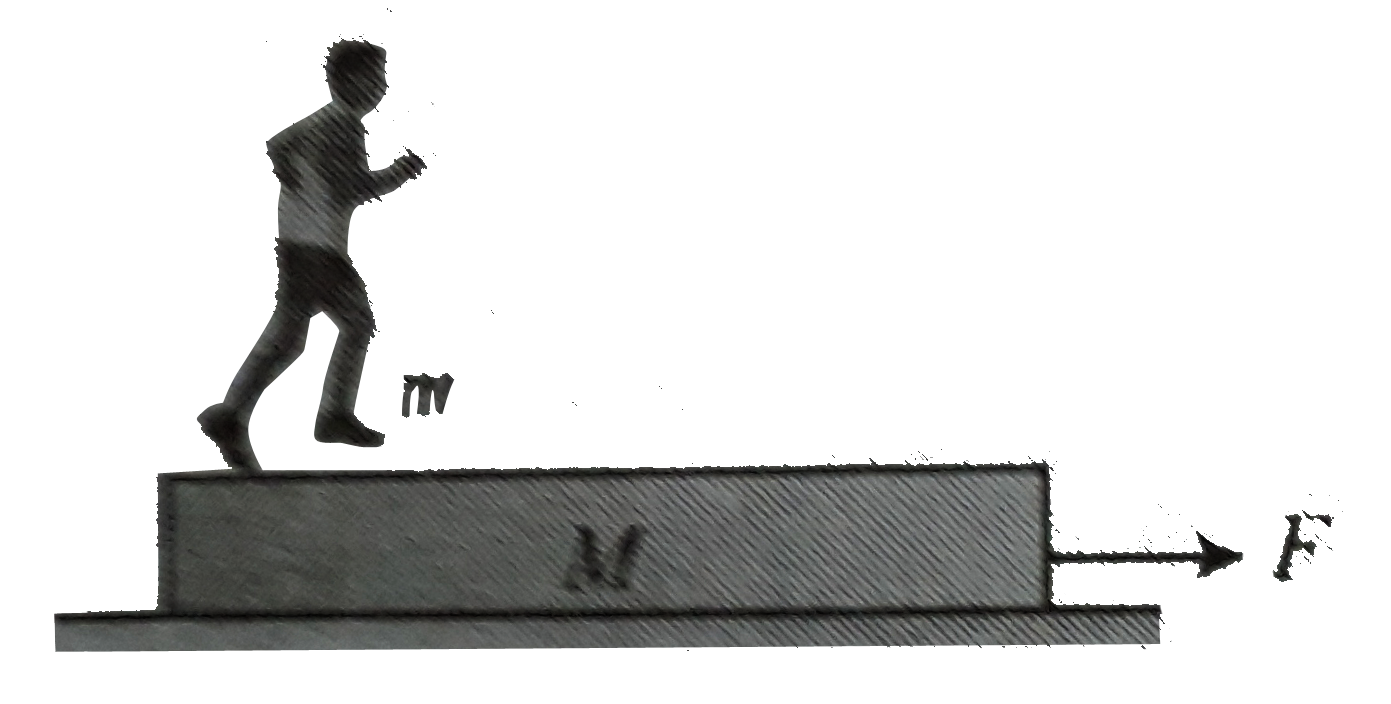 View Solution
View SolutionA steel rope has length L area of cross-section A young's modulus Y [density =d] (i) it is pulled on a horizotnal fritionless floor with a constant horizontal force F=|dALg|/2 applied at one end find the strain at the midpoint.
(ii). If the steel rope is vertical and moving with the force acting vertically up at the upper end find the strain at distance L/3 from lowerr end.View SolutionWhen a force is applied at one end of an elastic wire, it produce a strain E in the wire. If Y is the Young's modulus of the material of the wire, the amount of energy stored per unit volume of the wire is given by
View Solution

